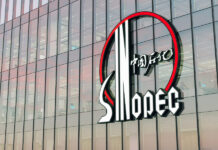HONG KONG
Special purpose acquisition companies (SPACs), as a viable listing alternative, have gained great popularity among large financial institutions and investors in the US over the past few years. The structure has attracted many Asian issuers to the US for fundraising. As one of the world’s most important financial markets, it is logical for Hong Kong to adopt a similar regime to attract financial institutions, investors and investment, and strengthen its position as Asia’s financial hub.
The Stock Exchange of Hong Kong (SEHK) has not attempted to merely replicate the US SPAC regime, but is establishing a regime tailored to the particular risks and requirements of Hong Kong capital markets. In particular, the SEHK has placed greater emphasis on having a high-quality regime with high-quality promoters and de-SPAC targets, aiming to create a regulatory system that can better protect the investors.
HK v US SPAC Regime

Partner and Deputy Head of China
Corporate and Finance Group at Sidley Austin
Tel: +852 2901 3804
Email: sherlyn.lau@sidley.com
Unlike the US SPAC regime, the SEHK intends to strike the right balance between delivering appropriate investor protections and market quality, and promoting market opportunity. This vision is to be achieved by imposing higher standards for SPAC offerings and de-SPAC transactions, and higher qualification requirements for SPAC promoters.
For example, the SEHK has imposed rigorous fundraising and distribution requirements, including minimum offering proceeds of HKD1 billion (USD128 million), distribution to at least 75 professional investors of which at least 20 must be “institutional” professional investors, and at least 75% of SPAC’s securities distributed to these institutional professional investors. Trading of SPAC securities will also be limited to “professionals only”. SPACs will be required to ring-fence 100% of SPAC offering proceeds and, on a redemption event, refund investors their pro-rata share of the full amount plus accrued interest, effectively creating an almost risk-free investment scenario for SPAC investors.

Partner and Deputy Head of China
Corporate and Finance Group at Sidley Austin
Tel: +852 2901 3825
+65 6230 3965
Email: roh@sidley.com
This 100% ring-fencing requirement means that the SPAC promoters have to bear all the expenses and costs related to the SPAC’s offering, and continuing operations before the de-SPAC transaction, with the exception that part of such expenses and costs can be settled with interests or other income earned on monies held in the escrow account. SPACs will also be required to offer investors redemption opportunities under several circumstances.
In addition, the SEHK has set stringent requirements on the suitability of SPAC promoters, including at least one SPAC promoter holding specific types of Securities and Futures Commission (SFC) licences, and owning at least 10% of SPAC promoter shares. Unlike the US SPAC regime, the SEHK has imposed a limit on SPAC promoter shares (no more than 20% of the total shares plus 10% earn-out upon the successor company meeting certain financial targets), and a dilution cap of 50% on all warrants (including SPAC warrants and promoter warrants). The 10% earn-out mechanism is unique for the Hong Kong market, which is aimed to incentivise the promoters to seek quality de-SPAC targets.
Generally, the US SPAC regime, which is less stringent than the Hong Kong SPAC regime, would allow the market players to have more flexibility to adopt innovative arrangements. For example, in the US SPAC market, the promoters may have the ability to extend the deadlines for completing a de-SPAC transaction several times, where underwriters may require promoters to deposit additional funds into the trust account for such extensions.
Differences between proposed HK regime and US regime
| Key Requirements | SEHK | US Exchanges |
| Investor suitability | Restricted to only professional investors | Retail investors can participate in a SPAC IPO |
| Shareholder distribution | A minimum of 75 professional investors of which 30 must be institutional professional investors A SPAC must distribute at least 75% of each of SPAC shares and SPAC warrants to institutional professional investors | No such restriction. General NYSE/Nasdaq rules shall apply |
| Minimum issue price | A minimum issue price of HKD10 (USD1.28) per share | Nasdaq: Minimum bid of USD4 per share unless other requirements are met, then the minimum bid may be USD2 or USD3 per share. NYSE: Minimum bid of USD4 per share However, SPACs listed in the US typically have a unit issue price of USD10 |
| Minimum market capitalisation | HKD1 billion (USD128 million) | General NYSE/Nasdaq rules shall apply. Nasdaq Global Market: USD75 million. Nasdaq Capital Market: USD50 million. NYSE: USD100 million |
| SPAC promoters | At least one SPAC promoter, which is an SFC-licensed firm (with type 6 [advising on corporate finance] and/or type 9 [asset management] licences) shall hold at least 10% of the promoter shares | No specific qualification or license requirement |
| Dilution cap | Promoter shares: 20% of the total number of shares + additional 10% subject to successor company meeting certain financial targets Promoter warrants: (1) if exercised, 10% of the total number of shares; and (2) each warrant to purchase up to 1/3 ordinary shares | No such cap. US SPAC promoters typically own 20% of the total number of shares |
| Requirement of successor company | Must meet all new listing requirements | Meet full initial listing requirements of Nasdaq and NYSE |
| Independent third-party investment | Mandatory independent PIPE investment for completing a de-SPAC transaction | No such requirement |
| Redemption rights | Public shareholders can redeem all or part of their shares prior to a general meeting approving: (1) a de-SPAC transaction; (2) a material change in any SPAC promoter holding 50% or more of the promoter shares or any single largest SPAC promoter; and (3) any extension to the deadlines for the announcement or completion of de-SPAC transactions | Public shareholders voting against a business combination must have the redemption right, while SPACs listed in the US typically grant redemption rights to all public shareholders, irrespective of their voting against or for a de-SPAC transaction |
Main hurdles in HK de-SPAC
Consistent with the SEHK’s intention to have a high-quality regime, the final Hong Kong SPAC rules impose higher standards on de-SPAC targets.

Partner at Sidley Austin
Tel: +852 2509 7858
Email: meng.ding@sidley.com
First, de-SPAC targets must have a fair market value equivalent to at least 80% of funds raised by the SPAC, which is a minimum of HKD800 million. Second, the SEHK will treat any de-SPAC transaction as a deemed new listing application where the successor company must meet all listing requirements. Third, private investment in public equity (PIPE) from institutional investors is required for any de-SPAC transaction.
The portion of the simultaneous PIPE transaction varies depending on the negotiated value of the de-SPAC targets, from 25% down to 7.5%. Lower portion may also be accepted by the SEHK on a case-by-case basis if the negotiated value exceeds HKD10 billion. In addition, the SEHK imposes certain requirements on the qualification and investment amount of the PIPE investors. The requirement for this substantial PIPE transaction may cause at least some timing uncertainty, pending SPAC promoters’ ability to search for capable PIPE investors at a suitable price. This PIPE investment requirement can protect public shareholders, as PIPE investors are generally experienced global financial institutions, which may have a collection of M&A tools to ensure the reasonableness and fairness of the de-SPAC target’s valuation.
SIDLEY AUSTIN
39/F, Two International Finance Centre
Central, Hong Kong
Tel: +852 2509 7888































